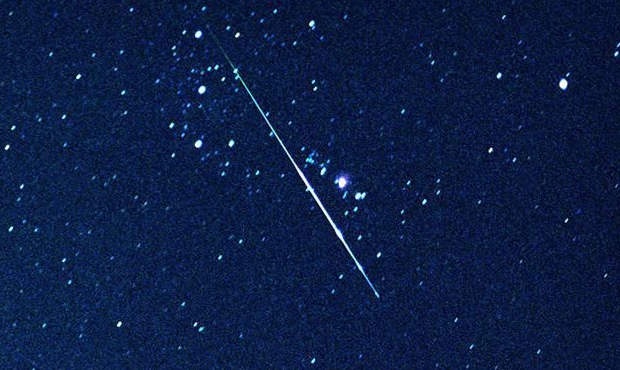December skies offer delights for stargazers at the holidays
Nov 25, 2020, 2:00 PM

(AP Photo)
(AP Photo)
With December right around the corner, we look to the holiday skies for some very special treasures for you and yours!
Our December skies in Arizona will be rich in so many ways – you can look forward to some amazing sights.
We begin with the moon, nearest of the celestial objects from Earth.
The moon begins the month nearly full and one that provides some extra light on the upcoming holiday season.
The November full moon, known as the full beaver moon, points us to the last full moon of the year.
This will be the full cold moon Dec. 29 at 8:28 p.m. Arizona time. That moon will ride high in the night sky, as winter will be just a few days old.
Before all that happens, the moon will begin its monthly march across the night sky with a last quarter moon Dec. 7. After that, the moon races on as a thinning waning crescent with the next new moon on the 14th.
This is the best time of the year to experience some of the finer treats in our Arizona skies – more on that later.
On or about the night of the 15th, look low in the southwestern sky for an amazing thin waxing crescent moon. This is the time of the month to look at the lunar surface in a pair of binoculars or a small telescope. The surface detail is amazing!
To help you locate some of the more interesting lunar features, here is a basic lunar map.
This is a great way to learn the many features on the surface of the moon.
The middle of December offers us one of the year’s best meteor showers.
This is the annual Geminid meteor shower. This shower peaks on the night of Dec. 13 into the early predawn.
Take it from me, this is one of the best meteor showers of the year year, as the rates of meteors in this year’s dark sky with no moon could be well over 50 per hour.
Simply look to the northeastern sky around 9 p.m. and look for any bright earth-grazing meteors which may light up the sky.
As the radiant gets higher in the sky, you should get to see many more.
The source of all these meteors is either a comet or an extinct asteroid, which in this case might be debris from an asteroid known as 3200 Phaethon.
Here is some additional history on the Geminids, along with a finder chart for the meteor shower.
As we get deeper into the Christmas and Hanukkah seasons, we will experience a grand conjunction of the two massive planets Jupiter and Saturn.
As the month opens up, look for Jupiter and Saturn low in the southwestern sky at sunset. The brighter object, Jupiter, is on the left.
Things will change rapidly as Jupiter will close in on Saturn and they will appear in a grand conjunction on the night of Dec. 21.
That is also the date of the winter solstice and as we celebrate the holidays, here is the real treat: both planets will appear only 0.1 degrees apart. That is one-fifth of the diameter of the moon.
The two planets have not been this close, since 1623!
Here is how close the planets will appear in this simulation.
If you miss this one, you will have to wait till March 15, 2080.
Finally, Mars still remains high in the south at sunset and fading in brilliance and Venus still adorns the early morning sky in the southeastern sky.
The Jupiter/Saturn conjunction reminds us of the great Star of Bethlehem at this time of the year.
Happy holidays and Merry Christmas to all!
To print your own monthly star chart, click here.
To view satellites/dates/times of passage, click here.
Listen to the Dr. Sky Show on KTAR News 92.3 FM every Saturday at 3 a.m.








